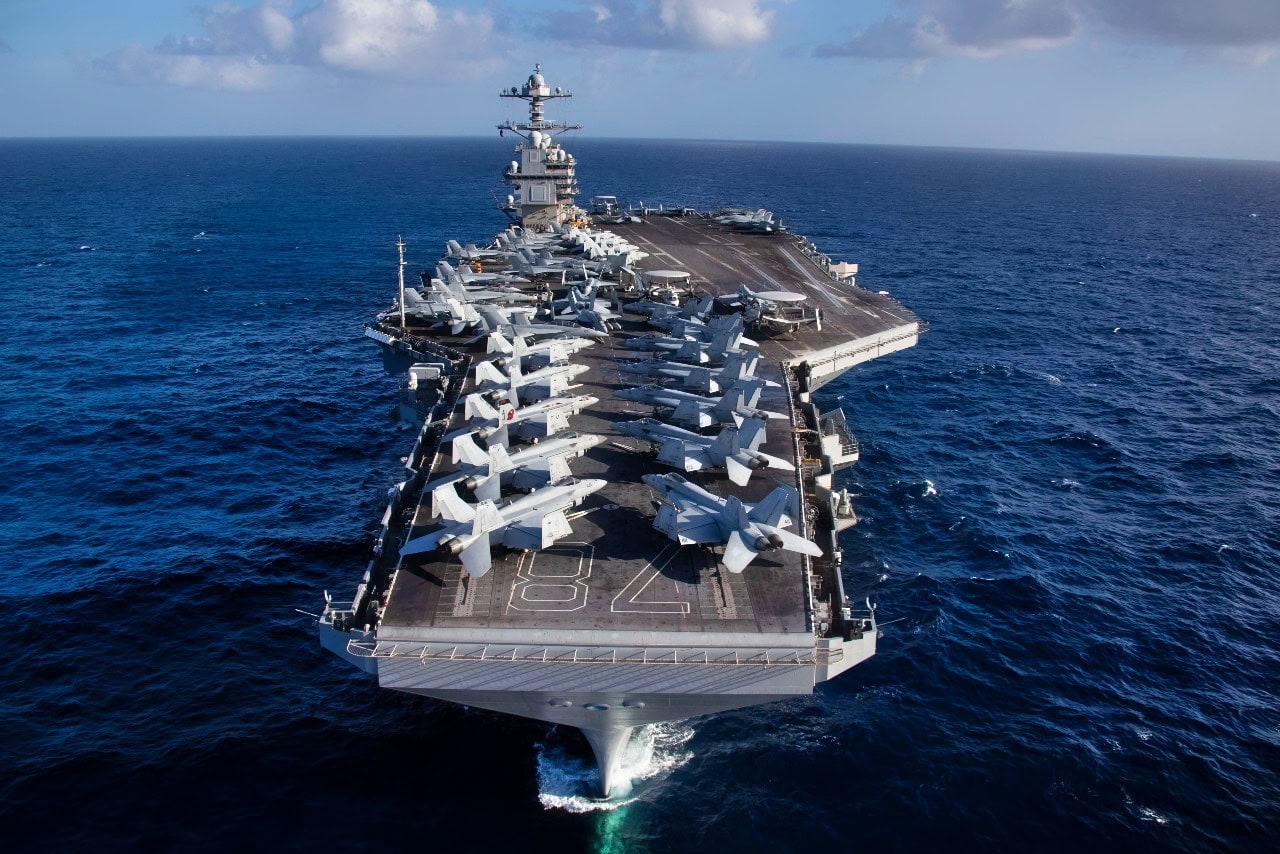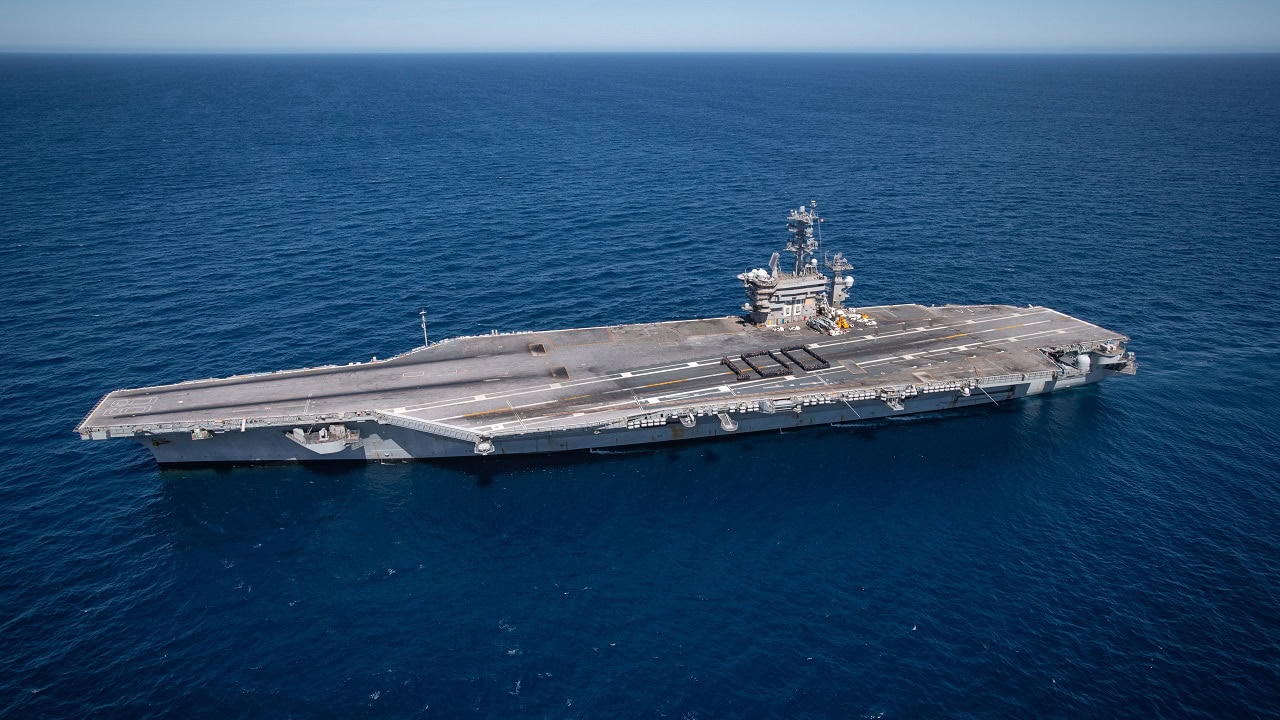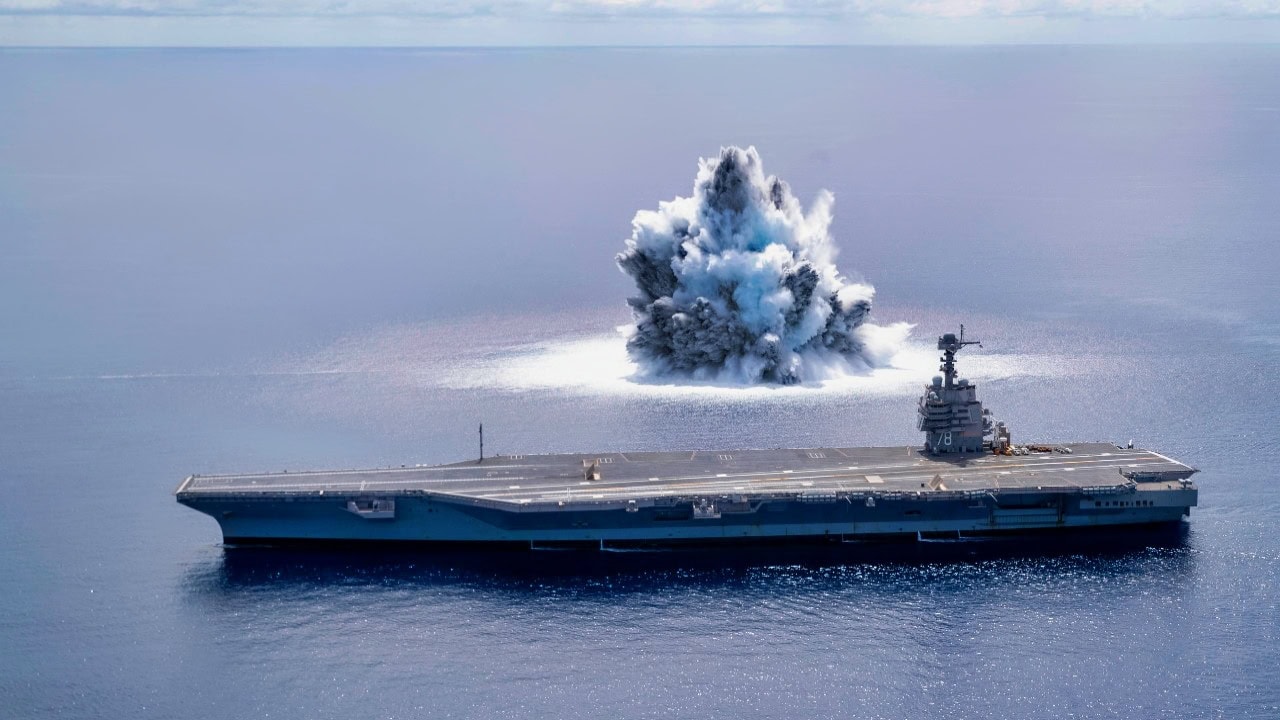Article Summary: The dominance of U.S. aircraft carriers is facing unprecedented challenges. While the Ford-class brings cutting-edge technology to naval warfare, China’s DF-21D and DF-26 missiles threaten to push carriers out of effective range.
-Meanwhile, Elon Musk advocates for swarms of networked drones as a cheaper alternative to traditional airpower.
-With rising fiscal pressures and evolving threats, the U.S. military must decide whether carriers can remain the backbone of global power projection or if new technologies will take their place.
-For now, aircraft carriers remain unmatched in mobility and firepower—but their future is more uncertain than ever.
Are U.S. Aircraft Carriers Becoming Obsolete? The Growing Debate
Since the end of World War II, U.S. Navy aircraft carriers have been the bedrock of American military power, serving as both a deterrent and a tool for rapid response to global crises.
These massive warships have projected force across the world, ensuring the U.S. can swiftly intervene in conflicts, provide humanitarian aid, and reassure allies.
From the Cold War through modern conflicts in the Middle East, American carriers have played a central role in nearly every major military operation.
However, China’s growing anti-access/area-denial (A2/AD) capabilities — particularly its development of anti-ship ballistic missiles — have raised serious questions about the future viability of these floating air bases.
The Ford-Class Aircraft Carrier
The latest evolution in American aircraft carrier power is the Ford-class supercarrier. Featuring a raft of improvements compared to the previous Nimitz-class carriers, the Fords incorporate electromagnetic catapults for launching aircraft, advanced radar systems, and a smaller crew requirement thanks to increased automation—their goal: to sustain American dominance at sea well into the 21st century.
However, China’s deployment of weapons like the DF-21D and DF-26 “carrier killer” missiles complicates the equation.
These long-range missiles, designed to strike moving targets at sea, could potentially force American aircraft carriers to operate much farther away from land and reduce their combat effectiveness if held away at arm’s length.
Another complication has been Elon Musk, the head of the newly established Department of Government Efficiency, or DOGE.
Into the Future: RIP Aircraft Carriers by Elon Musk?
Musk has been a strong proponent of cutting costs and going fully in with technological disruption. He also holds a deep skepticism toward military programs with big price tags — most notably the F-35 stealth fighter.
What might Musk say if he discovers the cost of navy aircraft carriers and the threats they face?
Musk recently expressed his skepticism of the fifth-generation stealth fighter on X, calling the engineers behind the design “idiots.” In favor of the F-35, Musk argues, America should instead invest in swarms of networked drones, something he sees as a cheaper alternative to the massively expensive stealth fighter.
Musk has argued that drone technology will eventually render traditional manned fighter jets obsolete, in much the same way he believes autonomous vehicles will replace human-driven cars. While drone swarms so offer certain advantages in terms of cost and expendability, they lack the range, payload, and stealth capabilities of fifth-generation fighters like the F-35. He faced stiff push-back online from his opinion on the F-35.
Why Musk Might Not Go to War Against Navy Aircraft Carriers: How to Replace Them?
Likewise, there is no immediate substitute for the sheer power projection that an aircraft carrier provides.
No other platform can rapidly deploy a flexible mix of manned and unmanned aircraft, conduct sustained operations over hostile territory, and serve as a mobile airbase far away from the United States.

The world’s largest aircraft carrier USS Gerald R. Ford (CVN 78), steams in the Mediterranean Sea, Dec. 24, 2023. The Gerald R. Ford Carrier Strike Group is currently operating in the Mediterranean Sea. The U.S. maintains forward-deployed, ready, and postured forces to deter aggression and support security and stability around the world. (U.S. Navy photo by Mass Communication Specialist 2nd Class Jacob Mattingly)
The United States military is currently at a crossroads: maintaining its global dominance as the world’s superpower, adapting to new threats, and experiencing significant fiscal pressures.
The debate about whether aircraft carriers can remain relevant in a world where hypersonic missiles and swarms of networked drones are rapidly growing in sophistication is far from settled.
What is clear, however, is that, as of now, there is no clear alternative to the aircraft carrier in terms of mobility, firepower, and endurance.
And for now, the aircraft carrier will remain the backbone of U.S. naval power —albeit one facing a future more uncertain than ever before.

(Mar. 12, 2022) Sailors aboard USS Nimitz (CVN 68) assemble on the flight deck and form a human ‘100’ to commemorate the centennial of the aircraft carrier. On March 20, 1922 the former USS Jupiter (Collier #3) recommissioned as the USS Langley (CV 1), the U. S. Navy’s first aircraft carrier. One hundred years later, Nimitz and Ford-class aircraft carriers are the cornerstone of the Navy’s ability to maintain sea control and project power ashore. Nimitz is the first in its class and the oldest commissioned aircraft carrier afloat., carrying with it a legacy of innovation, evolution and dominance. Nimitz is underway in the 3rd Fleet Area of Operations. (U.S. Navy photo by Mass Communication Specialist 3rd Class Elliot Schaudt)
About the Author: Caleb Larson
Caleb Larson is an American multiformat journalist based in Berlin, Germany. His work covers the intersection of conflict and society, focusing on American foreign policy and European security. He has reported from Germany, Russia, and the United States. Most recently, he covered the war in Ukraine, reporting extensively on the war’s shifting battle lines from Donbas and writing on the war’s civilian and humanitarian toll. Previously, he worked as a Defense Reporter for POLITICO Europe. You can follow his latest work on X.

